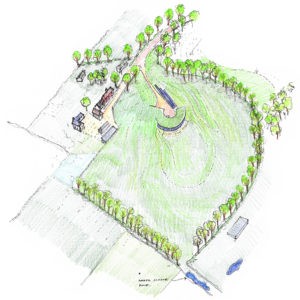The UK planning system is underpinned by central government’s National Planning Policy Framework, determined and enforced by District, Borough or City Councils. The Planning Departments of these authorities assess planning applications in consultation with Parish and Town Councils. Applications which are outside the norm,perhaps through their size, complexity or potential controversy,are taken to a committee of elected councillors who decide whether to approve,reject or impose any conditions on an approval. These meetings are open to the public to attend and indeed any interested parties may be called upon to make representation whether for or against the schemes.
In the case of Paragraph 79 projects, the National Planning Framework is somewhat ambiguous. The very nature of the schemes being considered as an ‘exception’to the rules gives an added complexity to the application.To avoid stumbling at the first Planning hurdle therefore,it is important to ensure the scheme is ‘called-in’ to committee for a fair hearing.
It is a Ward Members’ duty to review any applications put before them by the architects and to see that these applications receive a fair hearing. At this local level however there may be Ward Members who are not familiar with call-in procedures. To have a scheme called-in, the Member needs to inform the Planning Department that in their view the scheme has merit and as such should be considered by the committee.It is of course essential that any scheme submitted to the Planners is thoroughly researched, prepared and delivered by your architect,possibly with the assistance of a specialist Planning Consultant. The architect is allowed to inform members of the application but must not put any member of the Planning Committee under pressure to pre-determine the application.
Reaching Committee is only part of the journey. The section on Paragraph 79 in the Planning Framework that requires the scheme to be ‘truly outstanding or innovative, reflecting the highest standards in architecture, [that] would help to raise standards of design more generally in rural areas’is nonetheless open to individual interpretation. It is only through continuing to push the boundaries in architecture, presenting these schemes to the Planners and indeed to fully realising them in construction, that a firmer understanding of these highly sustainable projects will be reached. In time, more of these exceptional buildings will be created, enhancing our built environment for a highly sustainable and innovative future.

